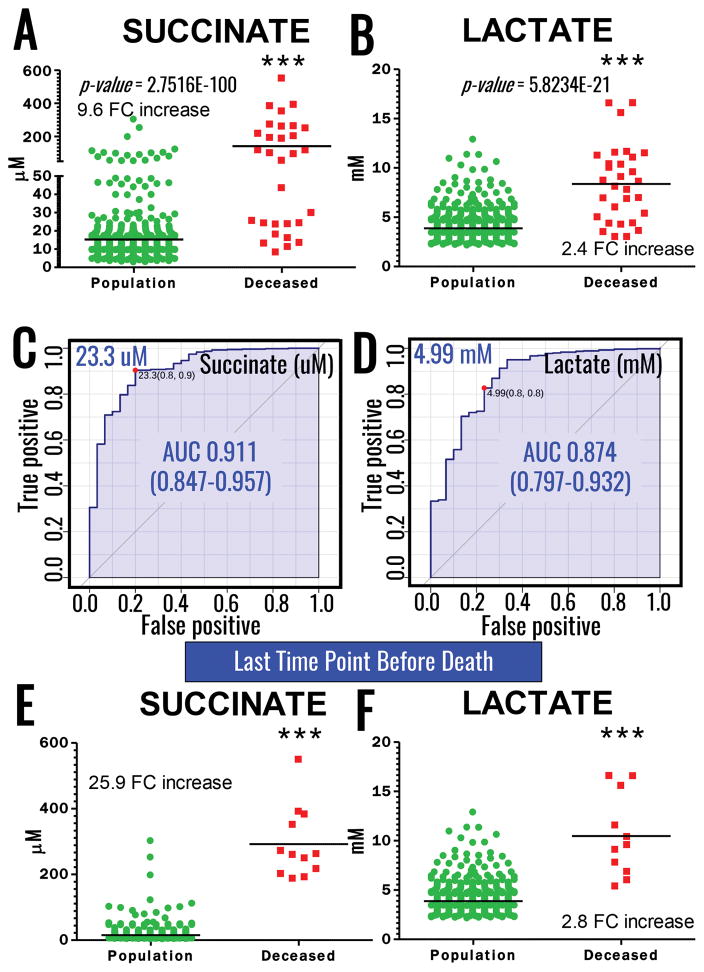Figure 1.
Quantification curves for succinate (A) and lactate (B), and Receiving Operator Characteristic (ROC, C and D, respectively) determined upon correlation to mortality in a cohort of 95 critically injured patients enrolled at the Denver Health – University of Colorado Hospitals (595 samples were assayed). Plasma succinate and lactate levels higher than 23.3 uM and 4.99 mM were good predictors of mortality in the tested cohort. Quantification of matched succinate (E) and lactate (F) in the last available time point before death or discharge from the hospital. String plot (right panel) shows the correlation between mortality and low/high levels of succinate and lactate (top and bottom, respectively) in the tested cohort. String thickness is proportional to the fold changes vs median value of the tested metabolite across the whole population, clearly indicating significantly higher increases in succinate in patients with poor outcome in comparison to the survivors.

